AENT 1st Edition Pictures
Click on an image for a bigger picture
The cover with gold lettering. The letters are in Aramaic Estrangela Script and read "Set-Apart Scriptures" (Ktaba Kadisha). The aleph-tav at the bottom of course represents Mashiyach, the Word.

No gilded edging on the pages. The picture here is not brand new though, so there is already some wear and tear. Update: On the second edition (not shown) the pages are a bit tighter/smoother.
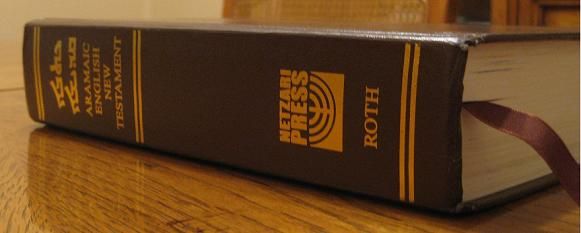
Beautiful spine. I love the menorah logo!
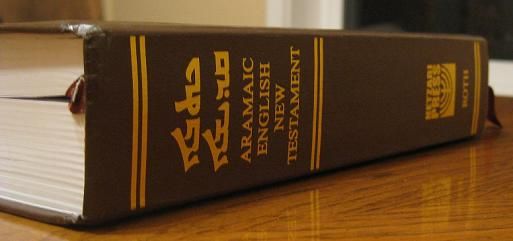
Another shot of the spine.
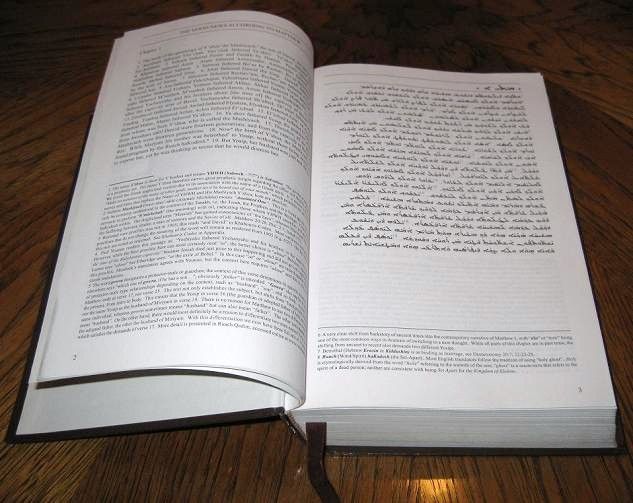
At Matthew chapter one the book has no problem staying open. The pages however are a little more stiff, but this isn't much of a problem. Although not "bible paper" I still enjoy it (it will be good for note taking and highlighting).
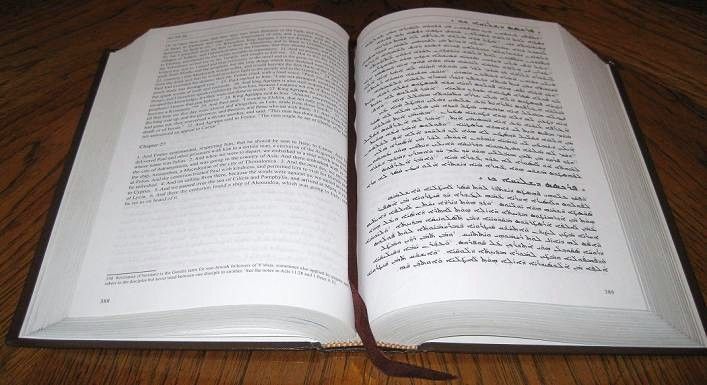
Here it is flat. The Aramaic text is in Estrangela, which is the ancient alap-beet that our ancient Aramaic manuscripts that we have in our posession today are written in. Although it may have originally been written in Hebrew characters, it would have been transliterated into this once the Netzarim fled from Jerusalem during the revolts.
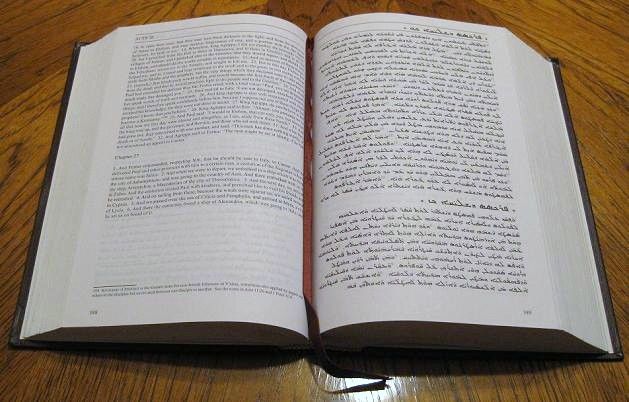
Another shot of it flat. There is no problem with it laying flat for pleasant reading.
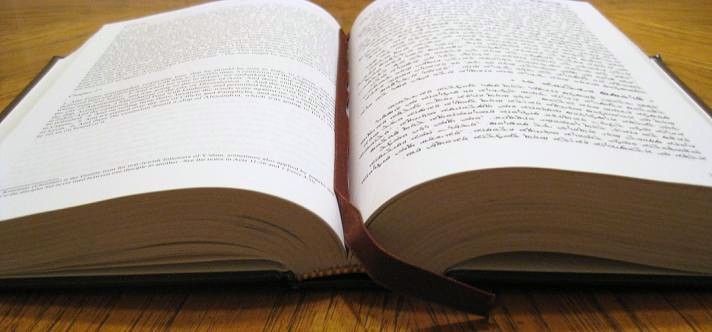
Even though it's not "bible paper" there is typically no problem with the pages staying nice and flush. It may not be as flush as you are accustomed to, but it has it's own unique feel that I guarantee will grow on you. The ribbon marker is very nice, although a bit short and not fray proof.
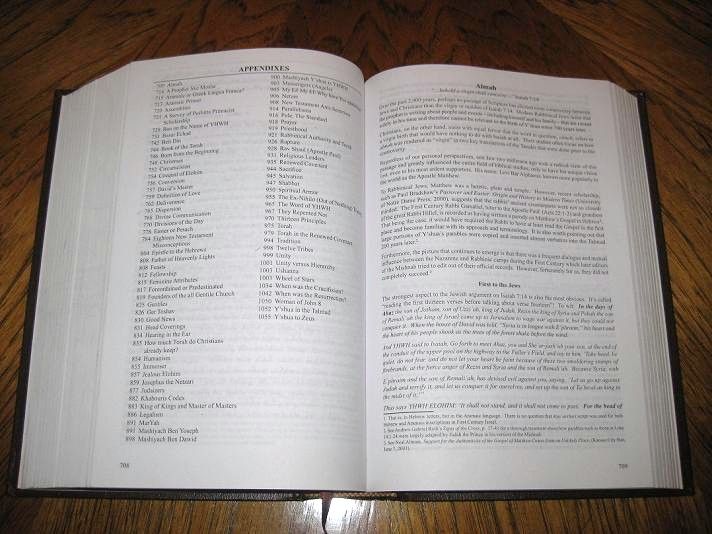
Here is a shot showing the appendices. This is a theological gold mine for Netzari theology and 1st century Hebraic insight. The cost of the product is worth this alone!
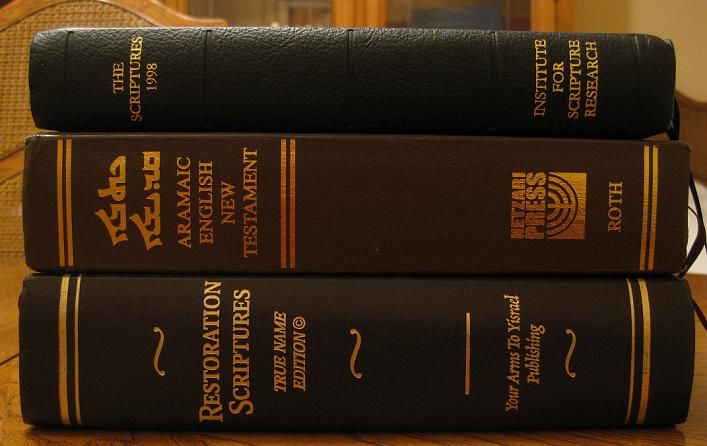
Side view. It is not quite as thick as the Restoration Scriptures (RSTNE) which incldues both the Tanakh and Ketuvim Netzarim. But it is much thinner than the Scriptures (TS98). The Scriptures however has thinner paper, is not in two languages, and does not have 1700 footnotes or 350 pages of appendices.

Here it is side by side with the RSTNE and the TS98. It is roughly the same size as the RSTNE, and the binding is very similar. I'd say that the RSTNE provided some inspiration for how to bound the AENT (the Ketuvim Netzarim readings prescribed to go with the Torah portions are also the same in each book).